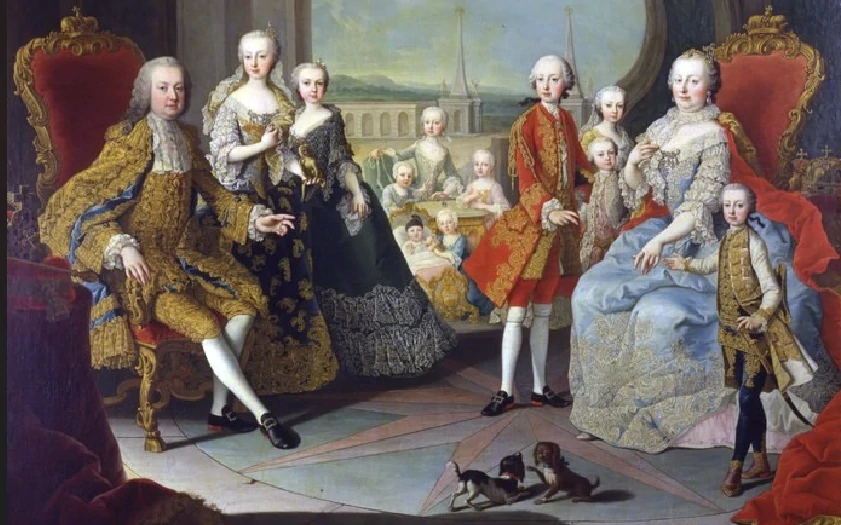What is the Stone of the Republic?
How long has it been around and where is it located?
What is written on it?
What is the background story behind it?
Which monument does it belong to?
What is underneath the square? Less than 10 minutes away from Time Travel is the “Stone of the Republic” on Helmut-Zilk Platz (formerly Albertinaplatz).
It is part of the memorial against war and fascism and is one of the largest monoliths in Austria with a height of 8.4 meters.
The granite stone comes from the Mühlviertel and weighs an impressive 57 tons.
As you can see from the photo, the mighty stone has an inscription on it.
It is an excerpt from the government’s declaration of independence on April 27, 1945:“Women and men of Austria! In the days of greatest distress caused by war and the consequences of war, we address our word to you all! Pull yourselves together!
Work together for the liberation of us all!
Help to rebuild the former, independent community of the Republic of Austria!
Rescue is only possible within the framework of a united state and with the help of an orderly state government.
The individual citizen as well as the isolated community cannot bring protection and salvation; without the reconstruction of your state there is no salvation for you, for your families, for your homes, for your workplaces and businesses. The government declaration ends with “Long live the Austrian people, long live the Republic of Austria!” Vienna, April 27, 1945.
Dr. Karl Renner m.p. Dr. Adolf Schärf m. p. Ing.
Leopold Figl m. p. Johann Koplenig m. p. (manu propia = own hand) It was signed by the three founding parties of the Second Republic, first and foremost the Socialist Party of Austria (SPÖ) with Dr. Karl Renner and Dr. Adolf Schärf, followed by Leopold Kunschak for the Christian Socialists, now the Austrian People’s Party (ÖVP), and Johann Koplenig for the Communist Party (KPÖ).
All six pages of the “Proclamation on the Independence of Austria” can be read here 1945_3_0.pdf (bka.gv.at) It is very interesting to take a closer look here.
The monolith on Helmut Zilk Platz is not the only monument to the Declaration of Independence.
The so-called State Foundation Monument was erected on October 25, 1966.
It features the articles of the Declaration of Independence.
It is located in the 3rd district in the Schweizergarten, where it leads a rather remote existence.
Back to Helmut Zilk Platz, where the Stone of the Republic has been located since 1988.
It was created by the sculptor Alfred Hrdlicka.
According to his own statement, the entire work “cost him a few centimeters of his spine”.
The memorial against war and fascism consists of four parts.
First, you enter the “Gate of Violence”, which consists of two granite blocks from Mauthausen.
On top are marble blocks depicting the victims of Nazi persecution in concentration camps and prisons on the left and the victims of war on the right.
After that, you come across the bronze figure of the “Jew washing the street”.
This is intended to draw attention to anti-Semitism when the Jewish population of Vienna was forced by the Nazis into “rubbing parties” in March 1938.
In 1991, barbed wire was added to the sculpture so that no one could sit on it… Behind it is the monument “Orpheus enters Hades”.
This commemorates the victims of the bombing below the square.
On March 12, 1945, the Philipphof, which once stood here, was heavily bombed along with the air raid shelter.
Everything collapsed and around 300 people lost their lives, of which only around 100 bodies could be recovered.
A memorial plaque next to the Stone of the Republic commemorates the victims of the Philipphof bombing. Time Travel tip: An interesting walk after a visit to Time Travel could be to follow the traces of the Second World War in Vienna.
There are several monuments in Vienna’s city center: The memorial against war and fascism on Helmut-Zilk-Platz described here, the deserters’ memorial on Ballhausplatz, the memorial for the Austrian victims of the Shoa on Judenplatz or the memorial on Morzinplatz to name but a few.

World War 2 and its impact on Vienna
What was the trigger for the 2nd World War? When did it begin and when and where did it end? What was the course of…


